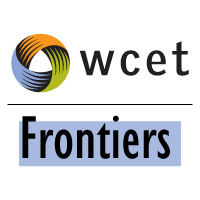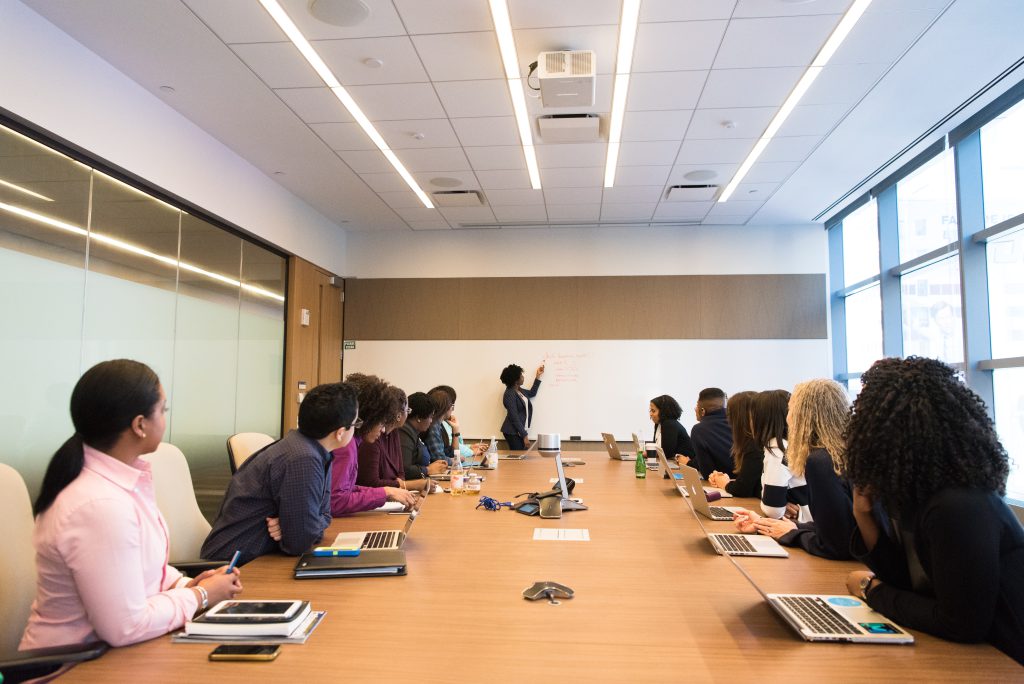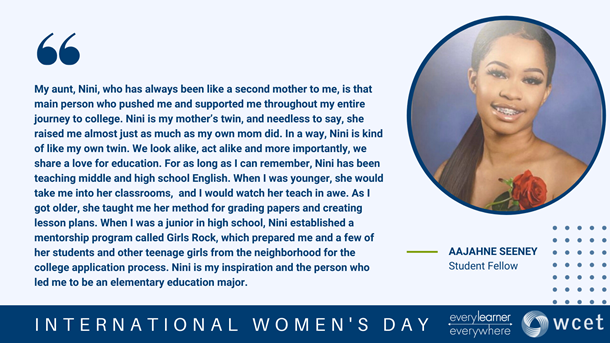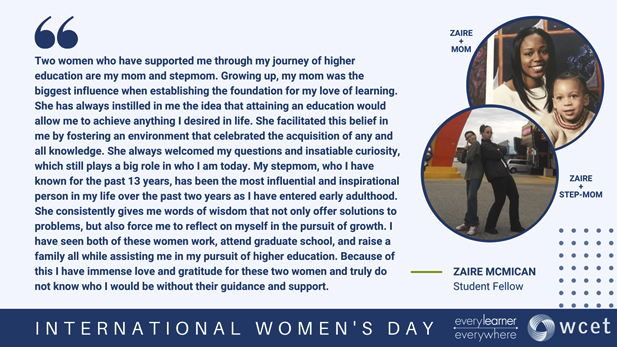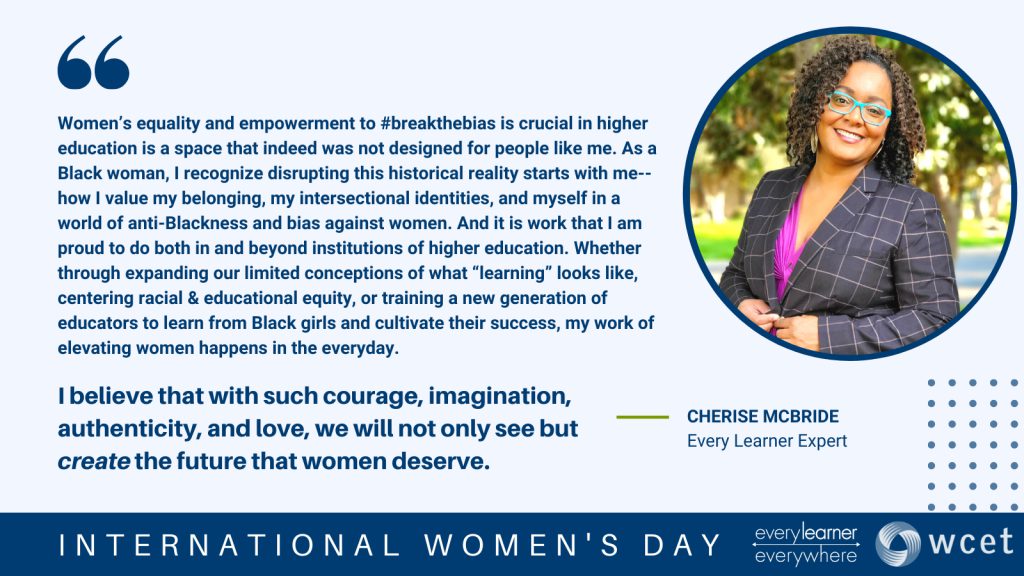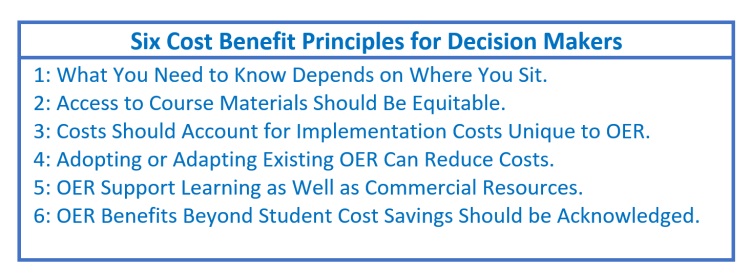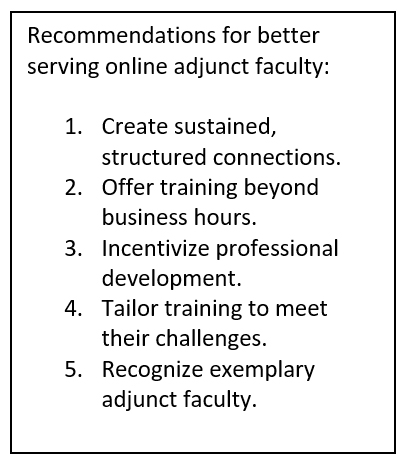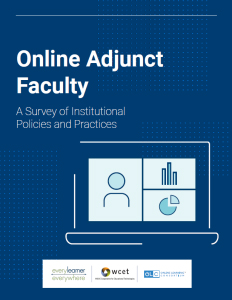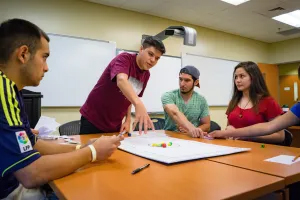How many of you like surprises? Surprises can be great fun, but let’s be clear that rulemaking surprises are sometimes more like encountering the clown from IT. Not to be left out, Congress is also providing its own surprise so you may want to consider contacting your Congressional Representative and/or Senator.
What started out as a relatively nerdy fun time with popcorn and watching the rulemaking process unfold, has brought issues of alarming concern. You may recall that we shared in January that the U.S. Department of Education had begun its second Biden administration rulemaking. Despite the December 2021 announcement of the seven issues to be covered, – SURPRISE! – Professional Licensure and Reciprocity made a return appearance after the development of effective regulations that came from consensus in the 2019 negotiated rulemaking! Cue the face of shock at the lack of notice. Additionally, we learned that Congress is addressing the ability to disburse Pell Grants to students in short term programs, but with limitations including funds not being offered when courses are delivered by Distance Education.
Below we will share the content of the policy issues that you will want to know, our concerns, inform you of the steps WCET and the WCET State Authorization Network (SAN) have taken thus far to communicate our concerns and seek clarification, and look ahead at the direction for you to follow and participate in this rulemaking process. To be absolutely clear, WCET and the WCET State Authorization Network (SAN) fully support the Department in its development of rational regulations that protects students, protects Federal investments in financial aid, maintains student options, and includes key stakeholders to address feasibility of implementation for compliance.
2022 Negotiated Rulemaking: Institutional and Programmatic Eligibility Committee
First, let’s set the stage. The rulemaking process began with the Department of Education’s May 2021 announcement of the intent to establish negotiated rulemaking committees. The Department suggested a broad range of issues and sought public input. This current rulemaking committee was further developed in October of 2021 when the Department announced what they called the 90/10 Public hearing notice. Again, the Department sought input for rulemaking. As mentioned previously, the seven issues of the current Institutional and Programmatic Eligibility Committee were released in December 2021 along with a request for nominations for stakeholders affected and knowledgeable about the seven issues shared. The rulemaking committee met in January and met again last week. There is one more week of rulemaking that will take place March 14-18, 2022.
In March, the committee will vote on language developed to determine if there is consensus (100% agreement) on the issues. Issues that reach consensus will move ahead to be released soon as proposed regulations subject to public comment. Issues that do not reach consensus may then have the regulations written by the Department and released as proposed regulations subject to public comment. After review of public comments, if the Department releases the Final regulations by November 1, 2022, the regulations will become effective July 1, 2023. If the regulations are released after November 1, 2022, the regulations will become effective July 1, 2024.
Professional Licensure
The issue of Gainful Employment along with the 90/10 rule have been the most publicly addressed issues of this current rulemaking. In January, nobody expected that the week before the rulemaking was to begin, that Professional Licensure (student notifications regarding programs leading to licensure) would be tucked into a little discussed issue of Certification Procedures. Proposed changes to professional licensure requirements were added into the first Certification Procedures Issue paper version 1. Issue papers on each of the seven issues were released by the Department to provide recommended language as the basis for rulemaking discussions. This issue of student consumer protections for programs leading to a professional license had been discussed in the 2019 rulemaking by knowledgeable subcommittee staff members to develop operable language that was then provided to the main committee that reached consensus on the language to provide regulations that are currently effective as of July 1, 2020. Since we did not know this was going to be one of the issues discussed, we did not try to nominate some individuals knowledgeable about the issue to inform the current committee.
Language Provided
The proposed language regarding professional licensure is found as an item that would be included in the Program Participation Agreement (PPA) 34 CFR 668.14. A PPA is a document that institutions submit to fully inform and express that the institution will meet required standards in order to provide Title IV Federal Financial Aid. The Department’s issue paper stated that the intention of revisions of 668.14 is to make the PPA more rigorous. New language proposes to require institutions to “ensure” that the curriculum of the institution meets state educational requirements for programs that lead to a professional license or certification. The January version proposed removal of the 34 CFR 668.43 (a)(5)(v) public notifications. No mention was made about the related 34 CFR 668.43(c) direct notifications, but it is clear from the discussions that many negotiators and Department staff see those notification as insufficient protection.
The February version of the Department Certification Procedures Issue paper V2 made some slight language revisions. The most substantive change from the first paper was that the Department brought back the 34 CFR 668.43(a)(5)(v) public notifications regarding determinations about the curriculum meeting the state educational requirements. As you may recall, institutions could notify students that their program meets educational requirements, does not meet requirements, or that there is “no determination made” for a licensed profession in a state. The option to provide the “no determination made” regarding the curriculum meeting state educational requirements was removed in this new issue paper by the Department. The only choices were to provide lists of states that the curriculum meets or list of states that do not meet state educational requirements
Committee Proceedings
In January and February, the majority of the committee members were singularly focused on a consumer protection-based notion that if an institution offers a program leading to a license or certification, that the curriculum must meet the educational requirements where a student is located. We agree that students should never be misled. However, what was missing in the conversations was the familiarity of how varied the state boards for the professions operate including offering approvals (or not), sharing educational requirements (or not), and offering various certification pathways to address varied state requirements. Conversations during the February session appeared to indicate that the committee may not be aware that professional licensure notifications are currently required by regulations that are in effect.
Our Concerns
We have four major concerns:
First, the proposed language requiring the institutions to “ensure “that their programs meet state educational requirements in each state to serve students is an untenable requirement that does not recognize the great variety of ways in which state agencies require approvals or even provide guidance on pre-licensure educational requirements. The term “ensure” is a high bar that is not an operable one for all states for all professions. The institution will need assurance from state licensing boards in order to meet a legal standard of ensuring that the curriculum meets state educational requirements. This creates a great liability risk for institutions. As noted, states and professions vary such that there is not necessarily a specific approval process for each institution’s professional program in each state. During a public comment period in January, we asked the negotiators for clarification regarding the practical application of the term “ensure” to better understand the parameters and expectations of the term. Additionally, we asked the negotiators to seek input of professional boards to understand the processes and the implementation capability of such a regulation.
Second, related to our first concern, we anticipate a heavy burden on state licensing boards as they will be the entity that must provide the assurance to the institution to address this new legally binding requirement. For the institution’s ability to “ensure” that the curriculum meets state educational requirements, we see no other path than relying on the ability of the state board in each state for each professional program to provide an approval to document that the curriculum meets state educational requirements. The institutions will need the state boards’ direction for these approvals and ties with the state board to obtain any state board changes to licensure requirements.
Third, the proposed language eliminates choices for military and other affected students who are not permanently located where they participate in an educational program. Additionally, the language does not offer consideration for the student who may not wish to be licensed in the state where they are located while participating in the program. Reasons could include military affiliated students who will not remain in that state and the student who chooses the institution for its strong education and training in the profession but does not intend to remain in the state. The student may wish to complete their education and then determine where workforce needs exist. There is no flexibility in considering these students and the language eliminates the ability for student choice.
Fourth, we are concerned that an uninformed rulemaking committee will create regulations that are ambiguous, flawed, and will provide added protection for some students while causing unintended harm to others. Neither the proposed language nor the conversation by the negotiators make it clear whether the proposed language is to address only distance education, as was the focus of final regulations released in 2016, or address all modalities as is the focus of the currently effective regulations that replaced the 2016 regulations. Additionally, no understanding of state licensing board processes has been considered or discussed by the committee. It is equally astonishing that they did not fully discuss the parameters of the currently effective professional licensure notification regulations that the Department re-entered into the second version of the Certifications Procedures Issue paper.
State Authorization Reciprocity
The week before the February committee meetings, several negotiators supplied proposed versions of various issue papers. Two negotiator issue papers, Issue Paper 6: Certification Procedures – Proposed Language memo from Carolyn Fast, et al. and Issue Paper 6: Certification Procedures – Proposed Language memo from Barmak Nassirian both proposed similar versions regarding the expectations of a state authorization reciprocity agreement, but housed within PPA related regulation 668.14. The Department did not include this sub regulatory language in Department Certification Procedures Issue paper V2 even though two negotiator-based proposals included new language.
Language Provided
The proposed language revisits contentious discussions that occurred late in the 2019 Negotiated Rulemaking about the definition of a state authorization reciprocity agreement that is found in 34 CFR 600.2. The proposed language in both issue papers suggests that an institution must: “comply with all state consumer protection laws, including both generally-applicable state laws and those specific to educational institutions, except for state requirements for obtaining state authorization that are inapplicable pursuant to a state authorization reciprocity agreement.”
Committee Proceedings
Because neither Certification Procedures Issue paper version 1 nor Department Certification Procedures Issue paper V2 included that proposed language, the language was not raised by the Department for consideration. One of the negotiators raised the new issue in her remarks on the subsection, but there was no further discussion nor acknowledgement of the proposed language. On the final day of rulemaking for the February rulemaking week, it was emphasized by the Department that the rulemaking is for the purposes of discussing issues presented in the Department’s proposals. It is possible that the Department could include this proposed language in the Issue paper V3 in advance of the final week of rulemaking in March.
Our Concerns
We have four major concerns:
First, we are concerned that the purpose and effect of this proposed language is to change the definition of a state authorization reciprocity agreement which is part of Federal regulations that came from consensus in 2019 and effective July 1, 2020. The definition of a state authorization reciprocity agreement provides that a state may enforce its own general purpose state laws and regulations outside of the state authorization of distance education. The member states to the agreement, which they joined voluntarily, provide uniform requirements for state oversight of distance education.
Second, we greatly worry that, to dismantle the uniformity by allowing states with wildly varied requirements to enforce all state consumer protection laws that include those specific to educational institutions, would essentially negate or (at best) severely limit reciprocity. Uneven oversight of institutions would occur causing inconsistent consumer protection for students in various states.
Third, regardless of whether the institution participates in a state authorization reciprocity agreement, the institution remains subject to other state regulations that are “generally applicable” to any business, such as misrepresentation, fraud, registration with the Secretary of State’s office as a business, and adherence to state Department of Labor rules for those completing internships in some states.
Fourth, to allow for piecemeal consumer protection would eliminate consistent oversight of distance education in all member states and territories. Prior to the development of the State Authorization Reciprocity Agreements (SARA), which is the well-known type of reciprocity agreement, there was no oversight of institutions serving distance education to students in more than 20 states. This includes California in regard to out-of-state public and private non-profit institutions. Today, 49 states plus Washington, DC, Puerto Rico, and the U.S. Virgin Islands chose to be SARA members states to provide oversight to protect students from more than 2,300 participating institutions nationwide. The institutions are subject to uniform requirements that are overseen by the state where the institution is domiciled. Removal of this uniformity oversight structure would cause a return to a more confusing and inequitable administration of consumer protection for students.
Steps that WCET and the WCET State Authorization Network (SAN) have taken
After 10 seconds of initial shock, we took the following steps:
- In January, after receiving the Certification Procedures Issue paper version 1, we reached out to our WCET and SAN members to inform them of the professional licensure proposed language and asked for their input to express their concerns and how the proposed change to “ensuring” that the curriculum meets state educational requirements would affect them.
- Upon receipt of many thoughtful responses from members, we developed a summary of the responses based on the themes we found among their concerns. We placed a cover letter on the summary and sent it out to members and other key stakeholders to inform them of the situation.
- To collaborate with the negotiators, we developed a proposal of an alternative path to address stronger consumer protection while maintaining a reasonable structure that addressed the variation of how state professional boards operate and shared that with several negotiators.
- With the assistance of our colleagues at SHEEO and WICHE, we participated in a thoughtful discussion with two negotiators, Barmak Nassarian and Carolyn Fast, to share our several years of experience working with this professional licensure issue and to determine if we could find common ground to lend our support. We felt cautiously optimistic that we could come closer together. From that call, we learned that some negotiators may believe that the focus is just distance education while others want to address all modalities. Additionally, upon raising the cross reference with 668.43(c) that had been absent from these discussions, we were told by these negotiators that they would review the language to confirm and create uniformity on the direction of modality and type of student that is at the center of the protections of the proposed language. We are still optimistic that discussions with these negotiators can bear fruit in providing added protections, while addressing the current varied status of state licensing agencies.
- To address the issues raised by negotiators about revisiting the definition of a state authorization reciprocity agreement, colleagues from WICHE, SREB, MHEC, NEBHE, WCET and WCET State Authorization Network came together to provide a cosigned letter to the Department to address concerns, misconceptions, and future pathways to provide additional consumer protection within the policies of SARA.
Congressional Action to Exclude Online Education from Pell Expansion
Meanwhile, Congress is considering legislation to expand student Pell Grant eligibility for select short-term programs. Previously, grant eligibility had been limited to degree and some certificate programs. The purpose of the expansion is to provide more access to low-income students to programs that will quickly provide them with employable skills.
On February 11, Inside Higher Ed published a good summary of the intent and highlighted our biggest issue, which is the exclusion of fully distance programs from these grants. The following wording can be found in the middle column on page H953 of the Congressional Record, that an eligible program:
‘‘(XI) is not offered exclusively through distance education or a correspondence course, except as determined by the Secretary to be necessary, on a temporary basis…”
Call to Action
The issue is currently in conference committee, which means that they are working toward resolution of language that differs in the House and Senate versions. If you agree or disagree with this exclusion, you should contact your Congressional Representative and/or Senators soon. This may be especially effective if they are a member of the House Education and Labor Committee or the Senate Health, Education, Labor, and Pensions Committee.
Looking Ahead
The next and final week of rulemaking will occur March 14 -18, 2022. If you wish to live stream the proceedings, you must register in advance on the Department’s Rulemaking Website. The registration link will likely be offered soon. To review the materials provided to the negotiators including the various notices and policy papers, you will want to review that webpage. Eventually, this webpage will house the links to the recordings of the previous sessions. Also note that there is a public comment period for the last 30 minutes of each rulemaking day. To join the queue and provide a three- minute public comment, you must register at negreghearing@ed.gov by noon ET of the day you wish to make a comment. You may wish to note that the spots have filled quickly for each day.
Watch for more information in the coming weeks. As we learn more, we may be suggesting additional calls for action either through the Frontiers blog or, for members, on the WCETDiscuss and SAN Network lists.
